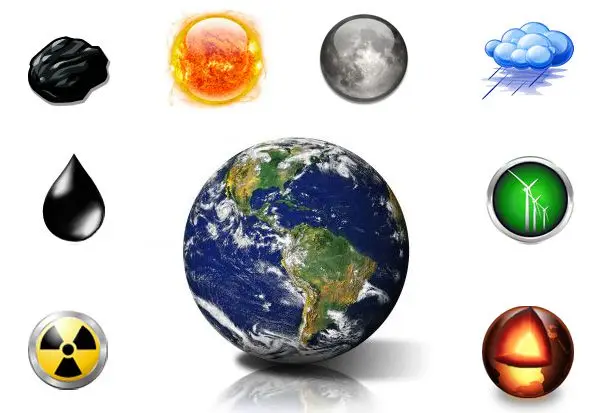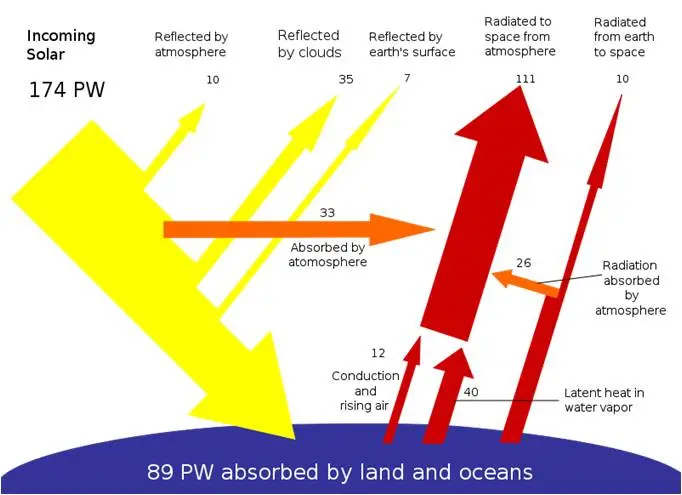In this post we are going to study the energy balance on the planet, which is a fundamental step in addressing the problem of global energy supply, and the viability of using renewable energies exclusively as sources of energy. Ecology with clear accounts.
Sometimes, in conversations about energy efficiency with friends or professionals in the sector, they have expressed astonishment when I have been critical of renewable energies. This may seem, at first, an attitude contrary to respect for the environment and energy efficiency, but it is not. Logically, we are all against pollution, climate change, and the destruction of ecosystems.
However, it is essential to conduct a preliminary study of the technologies (a rough estimate, so to speak), before designating a technology as truly environmentally friendly. In particular, we must be suspicious, by common sense, when those who proclaim the virtues of a system are a company with economic interests involved. In these cases, it will be our function as experts on the subject, and aware of the energy problem, to do the accounts clearly and truthfully, explain them when necessary, debate or expand them with new information when possible, and always denounce the lies we observe.
What energy sources do we have?
The planet obtains its energy from different energy sources. Of these sources, the largest, by a wide margin, is the energy that comes from the sun. The other available sources of energy are gravitational attraction (tidal energy), the thermal gradient of the earth’s crust (geothermal energy), and reserves of radioactive materials.
The rest of the available energy sources have their origin in the sun. We simply take advantage of them in different ways, for example, through the convective movement of air masses, the evaporation of water in the ocean, photosynthesis in biomass… These ways of harnessing solar energy can be summarized as:
- Directly - Solar thermal and photovoltaic.
- Indirectly - Hydraulic, wind, aerothermal, and biomass.
- Stored - Fossil fuels.
As can be seen, practically all available energy ultimately comes from the sun. Stored energy (in fossil fuels, for example) is by definition finite and, therefore, in the long term, cannot be considered a source of energy. It is a “bubble” that has allowed us to obtain large amounts of energy in recent years, but it is not sustainable over time.
Necessarily, any society that wants to be sustainable in the long term and respectful of the environment must obtain its energy from the sun. That is, a balance must be maintained, consuming at most the amount of energy that it is capable of obtaining from the sun (either directly or indirectly). But,
Is solar energy sufficient for current human consumption?
In summary, the maximum energy we receive from the sun, that is, the total incident radiation on the planet, is 174 · 10^15 W. On the other hand, estimates put average global consumption at 15 · 10^12 W (as of 2005). This means that the sun provides, approximately, about 10,000 times the energy consumed by society. Various studies quantify this amount between 4,000 and 8,000 times, but we will accept the value of 10,000 as valid, in an optimistic scenario.
Considering a global average yield of 10% (which is also really optimistic) for the complete process of capture, transformation, transportation, storage, and consumption, this means that it would be necessary to capture approximately 0.1% of the energy received from the sun to completely supply global energy consumption. Although this figure means that the supply of human consumption with solar energy is theoretically feasible, I emphasize that it is not as positive a figure as it seems.
For example, even in a very optimistic scenario, it would be necessary for every 30x30 meter plot of land to contain a 1 square meter collector in operation. This ratio should be present throughout the surface of the planet, including oceans, polar caps, and deserts… This is technically impossible, not to mention that we should consider whether we have enough materials to address such infrastructure, and the environmental catastrophe it would entail. Finally, we must take into account that global energy consumption grows exponentially every year.
The logical conclusion is that renewable energies, by themselves, do not provide enough energy to meet global demand. It is important to dedicate our efforts to increasing the yields of solar energy sources, as well as reducing their installation and maintenance costs. But it is absolutely essential to reduce energy consumption by adopting measures to save and increase efficiency.

